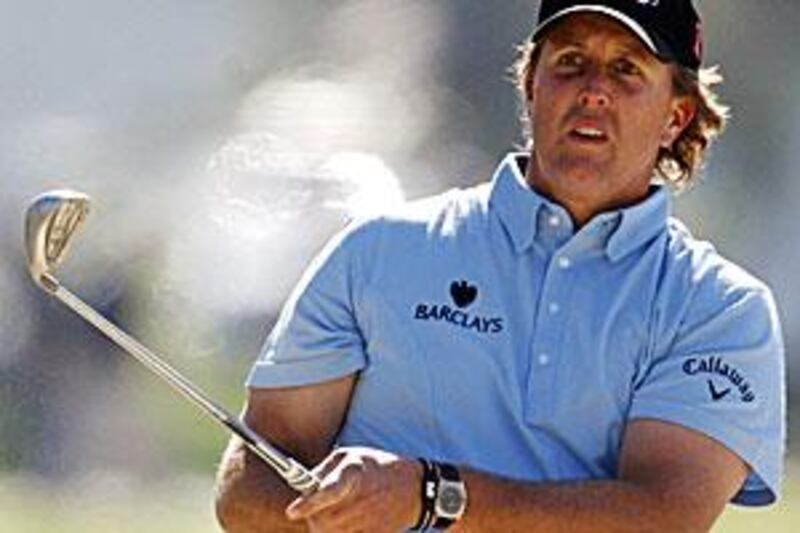Karsten Solheim would have chuckled at the suggestion he did not know what he was doing when he first started tinkering with golf club design. The man who made Ping a household name for golfers around the world revolutionised the game with his cavity backed putters and irons. Strangely, this son of a Norwegian shoemaker, whose family emi- grated to the United States in 1913, had barely set foot on a golf course until he was in his early fourties.
An engineer by trade, the late starter began experimenting with club design to help overcome some of his own shortcomings as a golfer. He realised that if the weight was distributed around the edges of the club head this would effectively increase the size of the sweet spot, making it easier to hit the ball further and more accurately. Not content with that innovation, Solheim went one step further by inventing a different shaped groove which made his now legendary Ping clubs, a product of the Karsten Manufacturing company he created, superior to anything else on the market.
His "square grooves", as they became known, changed the way golf was played for years, giving players much better control of shots hit from the rough, generating greater spin to eliminate the "flyer" and helping stop the ball quickly on the green. All that ended, or so we thought, at the start of this year when new regulations appeared to banish square grooves from the professional game. Then up stepped the world No 2 Phil Mickelson, brandishing a Ping Eye 2 wedge from the 1980s, and suddenly golf has a new controversy which could take Solheim's grooves back into the courtroom 10 years after his death.
Mickelson is taking advantage of a legal loophole which says that pre-1990 Ping wedges are permitted in tournaments, and has upset his fellow professionals. The European No 1 Lee Westwood, who will be using the new V-shaped grooves when he begins his bid to win the Dubai Desert Classic at the Emirates Golf Club today, says Mickelson is bending the rules. Scott McCarron went further, accusing his fellow PGA Tour professional of cheating, before publically apologising to Mickelson on Tuesday night.
"This issue should have been solved by January 1 and unfortunately there is a lot of legal haggling that has to go on before we can actually do something about the rule," said McCarron. And all this coming quickly on the heels of the Tiger Woods scandal when revelations about his private life shocked the golfing world. I wonder what Karsten, who gave his name to the Solheim Cup and put millions of dollars back into golf, would make of it all.
I got to know him well during my playing days and remember him best for the excitement he always showed for his latest club design. I stayed with him at his home in Pheonix once and when I left he insisted that his newest putter went with me. But as enthusiastic as he was about his work in golf, and about each of his innovations, Karsten was only interested in the good of the game. While he won a legal settlement in 1993 after the golfing authorities tried to ban his clubs, he decided that it was in the best interests of the sport to stop making them.
He felt it would be going against the spirit of the game, whose traditions and reputation for honesty, integrity and fair play he respected totally, to exercise his legal right. Amid all the current talk of loopholes and legal action, Mickelson could save golf a lot of pain and more bad publicity if he followed Solheim's example and put the square grooves away once and for all, particularly as there are few players in the world who can match the skill he has to get up and down without them. If he doesn't, John Solheim, who runs his father's business and shares his values, may ultimately have the last say by giving the governing bodies permission to ban the pre-1990 wedges.
Meanwhile, Rory McIlroy, who begins the defence of his Desert Classic title in Dubai today, will be aiming to build on his fine third place start to the season in Abu Dhabi a fortnight ago when he steps back out on to a course he loves after signing a new three-year deal with Jumeirah, his Dubai sponsors. After going so close to clinching the inaugural Race to Dubai he desperately wants to become a regular winner, following a season when he put his enormous talent on show and showed remarkable consistency.
He finished in the top five 12 times in 25 events and shared third place in the last major of the year, the USPGA Championship, with Westwood, the player who pipped him for the European crown. With Paul Casey and Westwood likely to be among his biggest challengers in Dubai, it is also good to once again start talking up the victory chances of Robert Karlsson, who aims to become the second back-to-back winner on the European Tour this season after Charl Schwartzel.
After finishing 2008 as Europe's No 1, Karlsson's campaign last year was ruined by an eye injury, and having had my career cut short by a similar problem I felt for him as he struggled. The former British Open champion Ian Baker-Finch never made it back after eye problems and all sorts of negative thoughts must have gone through Karlsson's mind last year, making last week's victory in the Qatar Masters all the sweeter.
Meanwhile, the Abu Dhabi champion Martin Kramer will be trying to make it two wins in three weeks as the Desert Swing reaches its climax. The German is getting better all the time and he should not be far away on Sunday. Former European and US Tour player Philip Parkin (www.philparkin.com) is a member of the TV golf commentary team for the BBC in the UK and Golf Channel in the US. @Email:sports@thenational.ae





